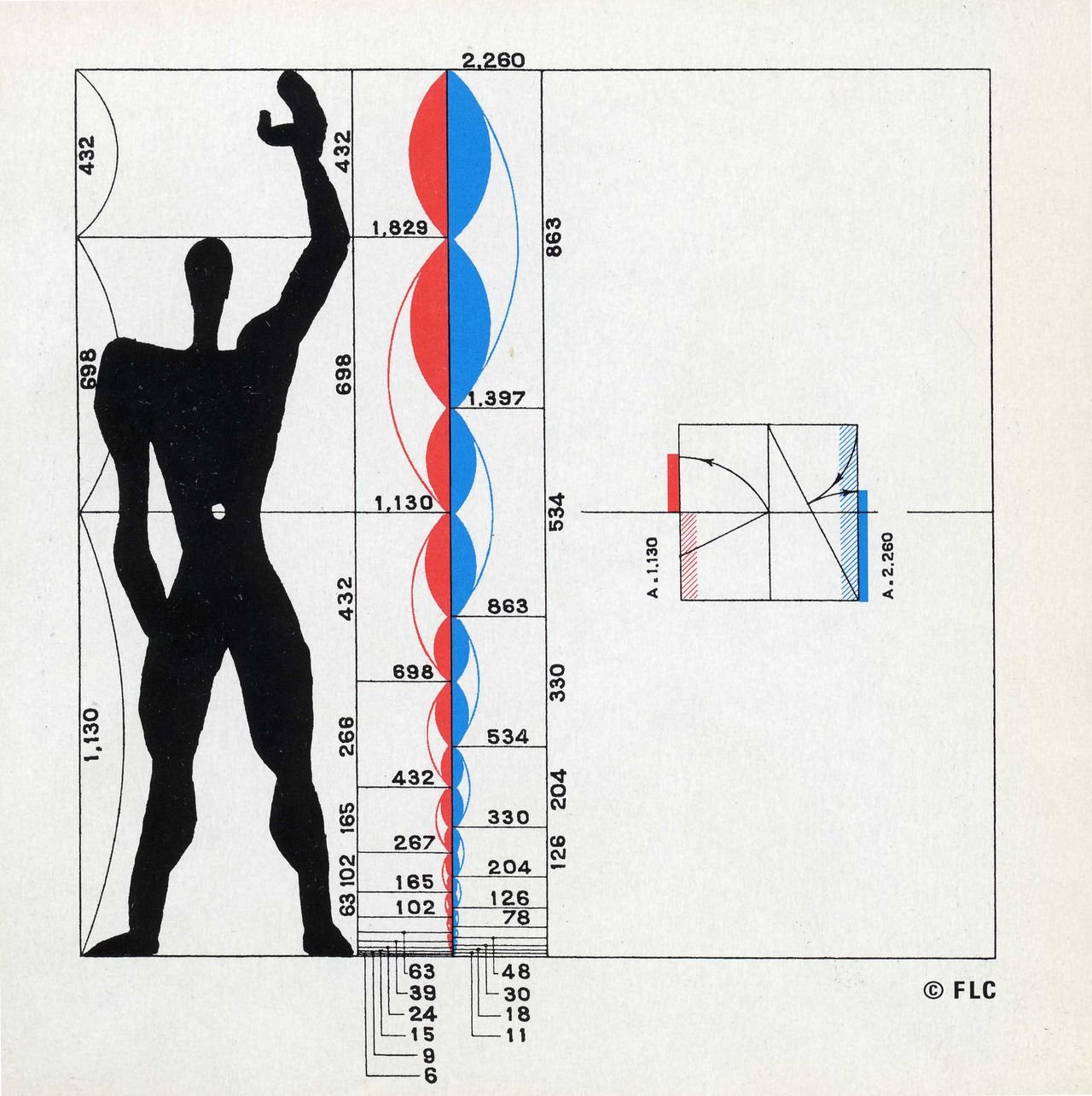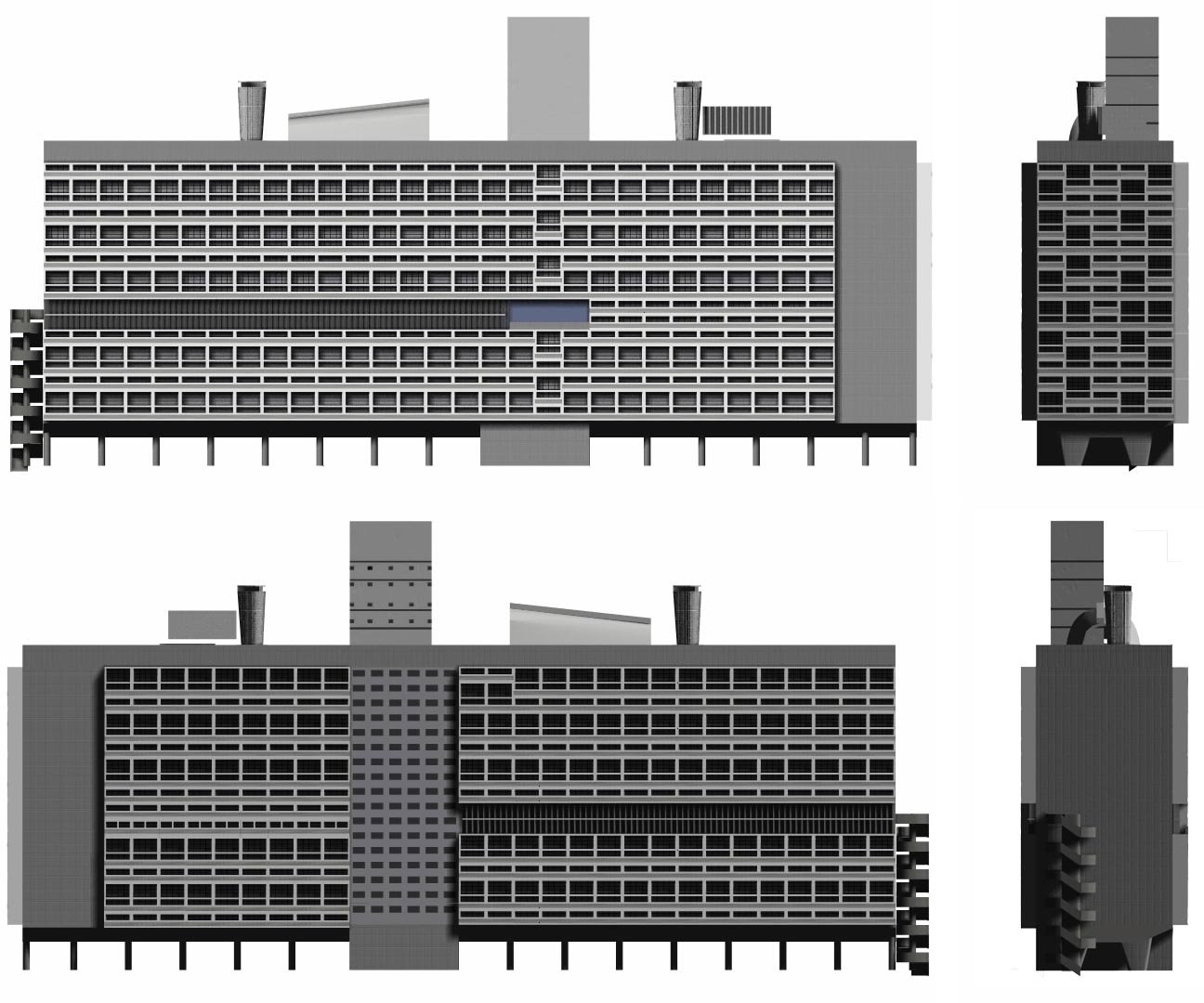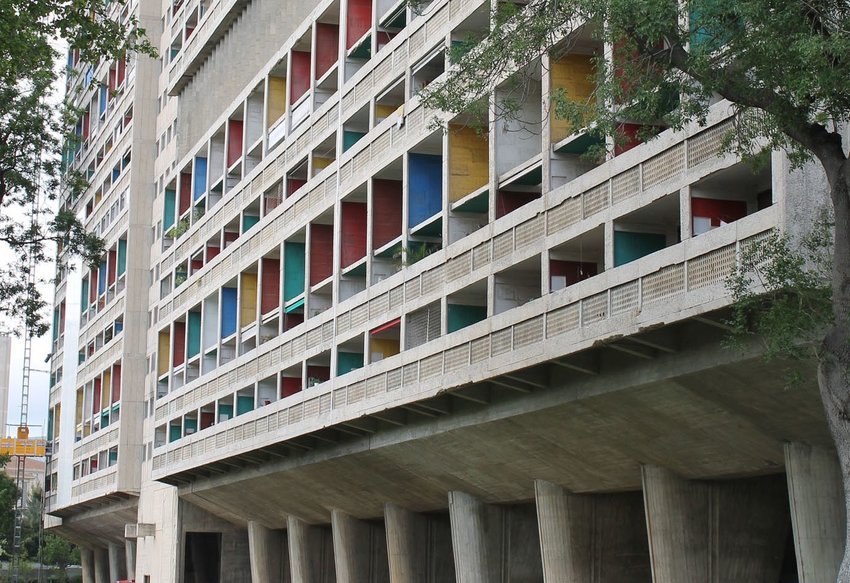As I move forward through history, the exploration of the human body's influence on architectural design takes a dramatic turn with the emergence of Modernism. This epoch saw architects and artists seeking to break away from traditional norms and conventions, striving for simplicity, functionality, and the reflection of the modern industrial age in their designs.
One notable figure of this period is Le Corbusier (1887-1965), a Swiss-French architect who has left an indelible mark on the field. His innovative approach brought a new dimension to the symbiosis between architecture and the human form.
Le Corbusier conceived the "Modulor" - a proportional system based on the human body and the golden ratio, intending to create a universal standard of architectural proportion. This scale was intended to bring architectural design in harmony with human needs and ergonomics.
A central principle of Modulor is the representation of the human body in two states: standing with the arm raised and standing with the arms by the sides. This reflects Le Corbusier's recognition of the dynamism of the human body and its inherent adaptability, much like the shifting needs of society that architecture must cater to.
A landmark work illustrating Le Corbusier's Modulor system is the Unite d'Habitation in Marseille. This residential housing unit was designed with the well-being of its inhabitants in mind. Each apartment is structured to let in ample sunlight and provide adequate space, mirroring Le Corbusier's intent to create a 'machine for living' that accommodates the human body's needs in a harmonious way.
For me, Le Corbusier's work signifies a turning point in how we understand the relationship between architecture and the human form. It expands the concept beyond mere structural analogies, emphasizing the importance of creating spaces that cater to our physiological and psychological needs.


